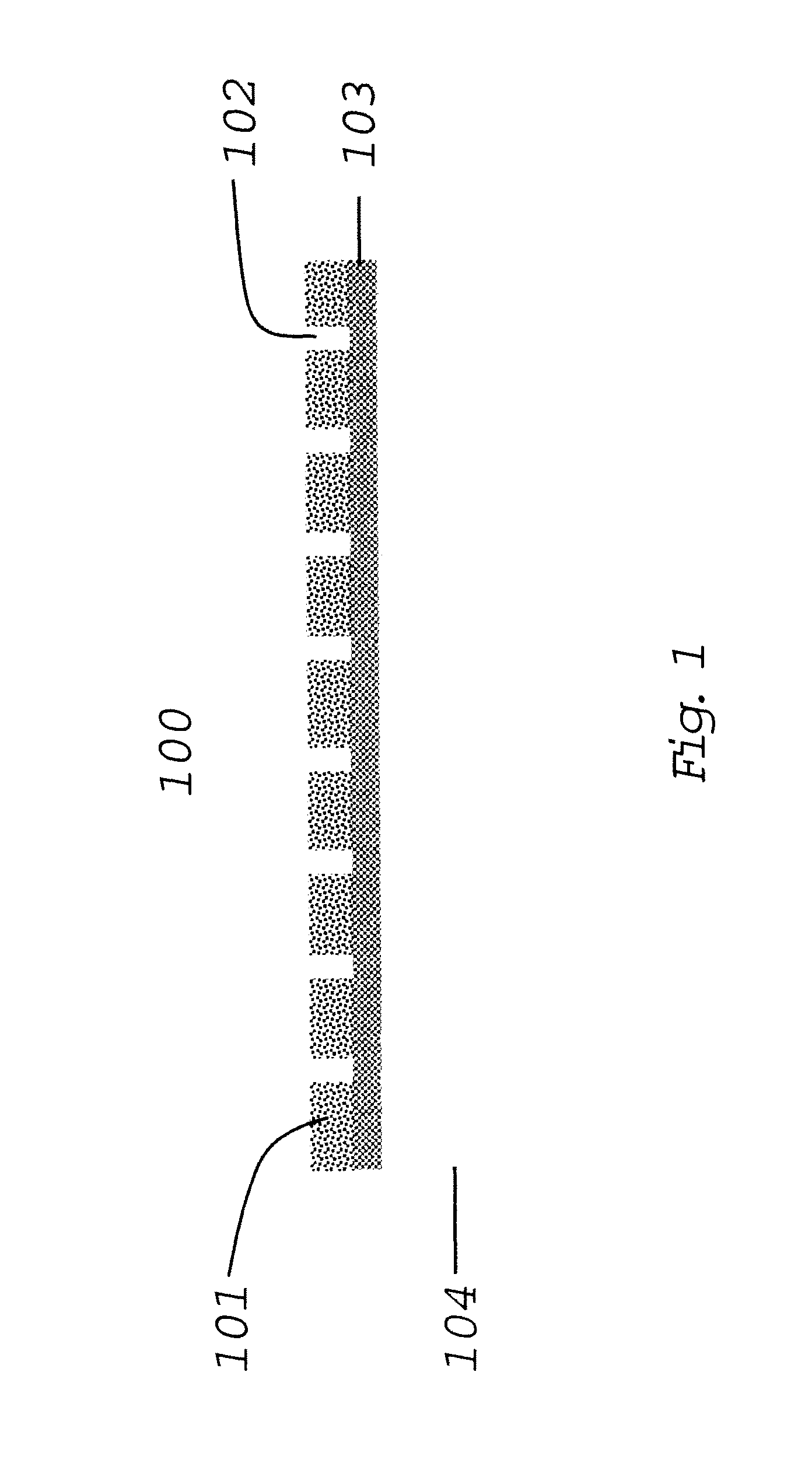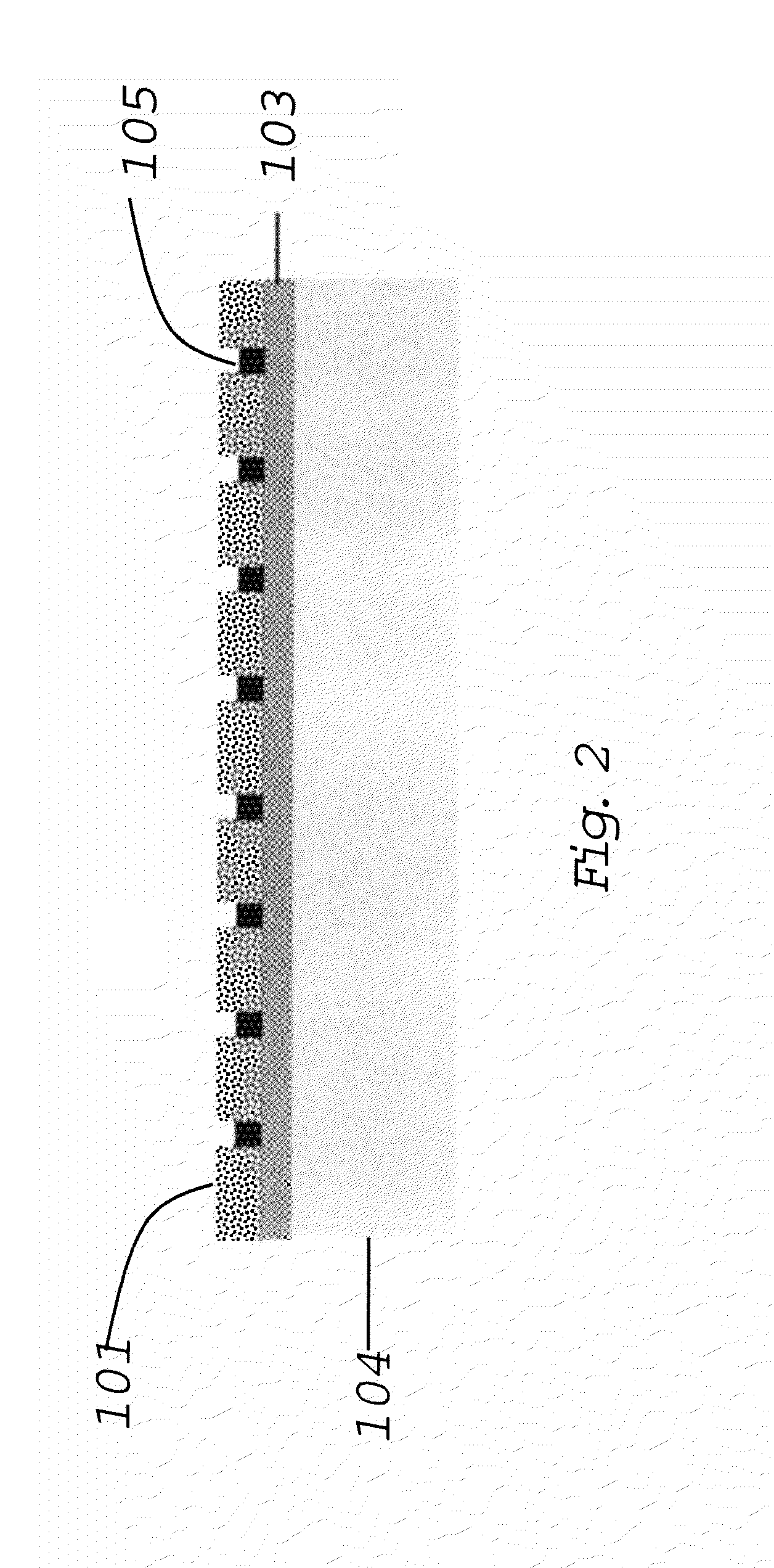Tools and methods for forming semi-transparent patterning masks
a mask and semi-transparent technology, applied in the direction of decorative arts, electrical equipment, solid-state devices, etc., can solve the problems of affecting affecting the appearance of masks, so as to improve the quality of masks, the effect of rapid and low-cost tool fabrication and the ability to form tools
- Summary
- Abstract
- Description
- Claims
- Application Information
AI Technical Summary
Benefits of technology
Problems solved by technology
Method used
Image
Examples
Embodiment Construction
[0034]In the following detailed description, numerous specific details are set forth by way of examples in order to provide a thorough understanding of the relevant teachings. However, it should be apparent to those skilled in the art that the present teachings may be practiced without such details. In other instances, well known methods, procedures, and / or techniques have been described at a relatively high-level, without detail, in order to avoid unnecessarily obscuring aspects of the present teachings.
[0035]The subject technology is directed toward improved methods and systems for forming rigid and flexible semi-transparent (S-T) imprint tools. A significant advantage of such tools is that they can be used to make imprint lithography masks that do not require plasma etching to remove the residue (scum) material that is an unwanted characteristic of the formation of such masks. Such plasma-etch-free masks, when used with the methods of additive and / or subtractive pattern formation...
PUM
| Property | Measurement | Unit |
|---|---|---|
| width | aaaaa | aaaaa |
| Aspect Ratio | aaaaa | aaaaa |
| semi-transparent | aaaaa | aaaaa |
Abstract
Description
Claims
Application Information
 Login to View More
Login to View More - R&D
- Intellectual Property
- Life Sciences
- Materials
- Tech Scout
- Unparalleled Data Quality
- Higher Quality Content
- 60% Fewer Hallucinations
Browse by: Latest US Patents, China's latest patents, Technical Efficacy Thesaurus, Application Domain, Technology Topic, Popular Technical Reports.
© 2025 PatSnap. All rights reserved.Legal|Privacy policy|Modern Slavery Act Transparency Statement|Sitemap|About US| Contact US: help@patsnap.com



